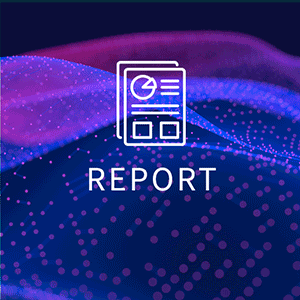The FinOps Framework by the FinOps Foundation is an operational framework and cultural practice which helps organizations maximize the business value of their cloud and technology investments. This framework helps organizations build and mature their FinOps practices through three iterative phases: Inform, Optimize and Operate.

Source: FinOps Phases by the FinOps Foundation
To help your organization effectively adopt FinOps, we developed this practical FinOps roadmap blog series based on these FinOps Framework phases. Our blog series provides real-world implementation advice for getting started with the most critical capabilities at each phase in your FinOps adoption journey.
In Part 1 of this series, we detailed the steps you need to take before you even begin practicing FinOps. In Part 2, we discussed activities associated with the Inform phase.
In this Part 3 blog, we address the Operate phase of the FinOps lifecycle. In this stage, you’ll start taking action to optimize cloud usage and cost. Key activities in this phase involve optimizing usage of cloud resources and optimizing the rates you pay for them.
Optimize cloud rates
A key activity for FinOps practitioners is rate optimization, or optimizing the rate you pay for cloud resources. This is primarily accomplished through the purchase of commitment discounts.
Before you can make that purchase, though, you’ll need to learn each phase of the cloud commitment optimization process and how to optimize your cloud resource costs completely, as outlined in the below graphs.


Now that you know the process, you’ll need the following details on these steps before you can make your commitment discount purchase:
- Purchase commitment discounts
- Understand reserved instances (RIs), savings plans (SPs) and committed use discounts (CUDs)
- Set up commitments to meet your “low water mark” of resource usage
- Inventory commitments that are already in use across your cloud provider accounts
- Identify commitment types, expiration dates, utilization levels and coverage levels
- Set up alerts on expiring commitments
- Understand reserved instances (RIs), savings plans (SPs) and committed use discounts (CUDs)
- Define commitment strategy
- Determine your longer-term strategy for commitments
- Will commitments be bought and managed centrally or decentralized?
- How will the benefits of commitments be allocated?
- Determine your longer-term strategy for commitments
- Optimize commitments
- Keep a close eye on commitments by tracking commitment coverage and commitment waste (underutilized commitments) over time
- Set up alerts for underutilized commitments
- Calculate the savings from various discount types and collaborate with teams to implement recommendations
- Understand enterprise discounts
- Identify what discounts and spend-level commitments are included in your enterprise contracts with cloud providers
- These prices are often negotiated by procurement teams but must be understood by FinOps practitioners
Optimize cloud usage
Another key activity for FinOps practitioners is workload optimization. Some FinOps practitioners find this activity challenging because it cannot be done alone. It’s critical to involve engineers who own workloads and applications, as they have the context for why certain resources were chosen to use. These stakeholders need to be involved across the cloud usage optimization process, as shown in the graph and bullets below.

- Eliminate resource waste
- Tackle low-hanging fruit by eliminating unused resources such as unattached storage volumes, unused IP addresses, idle VMs or orphaned snapshots
- Report on and share information about waste with resource owners
- Initially, you may use manual efforts, but to stay on top of optimization efforts, consider semi-automated cleanup
- For example, you might work with cloud operations to automatically shut down compute instances in development environments if they are idle for 48 hours (unless they have a particular tag to indicate they must stay running)
- Manage anomalies
- Your FinOps tool should alert you to unusual or unexpected cost activity immediately so that high costs don’t continue, and you end up exceeding your budget
- Set thresholds for both cost and usage anomaly detection
- Establish a process for investigating and resolving anomalies that includes coordinating with engineers to understand if anomalous activity was expected
- Rightsize resources
- Rightsizing resources to better fit your workload needs is one of the most impactful activities you can perform to optimize cost
- Work with engineering teams to deliver “showback” to those teams—recommendations and a report of the cost impact of those changes
- Establish guardrails
- Work with engineering leaders to implement automated governance to control costs
- Rules might include:
- Certain roles can’t deploy instances over certain sizes
- Certain roles can’t provision large storage instances
- Certain roles can’t provision higher priced services
- Resources must be deployed in certain regions
- Track wasted spend
- Optimizing cloud spend is a moving target and, even as you eliminate waste, new workloads and other changes will create new areas of waste
- Develop reports and leverage recommendations from your FinOps tools to track and identify the various types of wasted spend over time
- Create self-service dashboards
- Create self-service dashboards and reports for business units and engineers to track their spend
- Self-service reporting helps make stakeholders more aware of the positive cost impacts that their optimization efforts are having
Reviewing how far you’ve come
- For a nice refresher, it won’t hurt to review Part 1 and Part 2 of this blog series before you dive into the fourth and final installment on the Operate phase
- If you haven’t already, check out the FinOps Foundation Asset Library for a treasure trove of resources for everyone involved in FinOps, no matter where you’re at in your FinOps journey
- If you’re looking for like-minded FinOps professionals, research or inspiration, join the FinOps Foundation to connect with peers and gain valuable resources
Want to learn more about how Flexera One can help you make more informed decisions with complete technology visibility? Please check out our?resources, or?connect with us today.






